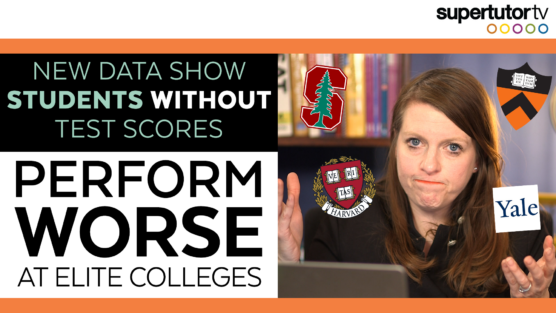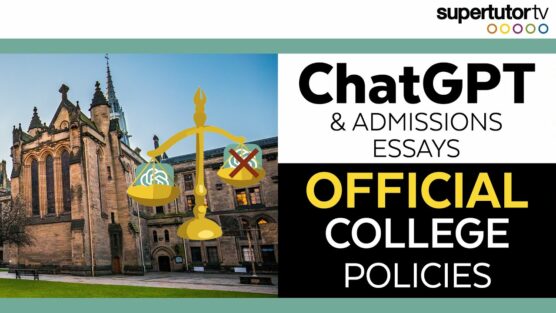Part 1 of a 3 part series
Let’s face it — college is expensive! You might be wondering exactly how you’re going to go about paying for it. Good news is there’s actually FREE money for you to take advantage of out there and it comes in the form of scholarships! Now, applying for scholarships may seem absolutely daunting. Lucky for you, I’m here to go over which colleges offer the best need-based and merit-based scholarships, how these applications work, and the steps you’ll need moving forward.
Research Early
Before I get into the specifics, I want to emphasize the importance of doing your scholarship search early. If you’ve set a goal of applying for certain ones, chart details such as deadlines, eligibility requirements, and necessary documents. You don’t want to miss out on applying for something because the deadline passed or you didn’t get a certain document in order.
Demonstrate Financial Need
To start, filling out the FAFSA will determine your eligibility for federal aid and indicate to the school(s) you’re interested in that you need assistance with paying for tuition and other expenses. I’ll also link our video showing a step-by-step on how to fill out the FAFSA in the blog post for this video.
Certain schools require College Scholarship Service (CSS) Profile through the College Board. This profile determines your eligibility for non-federal financial aid, which may include a school’s own scholarships, grants, or loans. To check whether a school or scholarship program you’re interested in requires this profile, click here. I’ve also linked the College Board’s student guide on completing the CSS Profile.
A note: Unlike the FAFSA, the CSS Profile requires a $25 fee to report to one college or scholarship program, and an additional $16 beyond the first. However, students may also qualify to waive this fee.
Need-Based Scholarships
To limit student debt at graduation, Ivy League institutions implement “no loan” policies and instead give grants or scholarships to cover a student’s demonstrated need. You’ll have to qualify as low-income, which varies across schools, but may be defined as Pell Grant eligibility or having a combined household income under a certain threshold. However, a “no loan” policy does not fully eliminate student contribution; students are still responsible for some expenses.
Other colleges place a cap on how much students can borrow, which lowers loan debt. According to a 2016 Money article, over 140 U.S. schools claim to meet at least 90% of a student’s demonstrated financial need. A few of them are listed here using data from Money.
| College | Average price after grant aid | Average debt after graduation |
|---|---|---|
| Princeton University | $3,630 | $6,810 |
| Harvard University | $2,473 | $6,000 |
| Yale University | $3,918 | $12,000 |
| Massachusetts Institute of Technology | $5,128 | $13,645 |
| Duke University | $8,777 | $6,500 |
| University of Pennsylvania | $7,636 | $21,500 |
| California Institute of Technology | $6,696 | $18,349 |
Merit-Based Scholarships
Students who do not demonstrate financial need but still want to lessen student debt can try applying to be considered for merit-based scholarships. All Ivy League schools practice “need-blind” admissions, which means a student’s acceptance is based on merit rather than his or her ability to pay. The following is a list of colleges that offer full-ride scholarships, which cover full tuition and are based on student performance.
| College | Scholarship |
|---|---|
| University of Chicago | Stamps Leadership Scholarship |
| Vanderbilt University | Ingram Scholarship, Cornelius Vanderbilt Scholarship |
| Washington University in St. Louis | John B. Ervin’s Scholar Program, Anika Rodriguez Scholars Program, Danforth Scholars Program, Stamps Leadership Scholarship |
| Emory University | Emory Scholars |
| University of Southern California | Mork Family Scholarship, Stamps Leadership Scholarship, Trustee Scholarship |
| Tulane University | Deans’ Honor Scholarship, Paul Tulane Award, Stamps Leadership Award |
| Boston University | Trustee Scholarship |
Independent Scholarships
Beyond scholarships granted by the government or colleges themselves, you can try applying for scholarships sponsored by a multitude of organizations. Notable ones include The Gates Millennium Scholars Program, The Science, Mathematics and Research for Transformation (SMART) Scholarship, The Coca-Cola Scholars Program, and Ayn Rand Essay Contests.
It may also be advisable to look for scholarships with smaller awards. Those that offer large sums of money attract more students, so they are inevitably going to be more competitive. Scholarships with smaller awards may not draw as many applicants, so you may have a better chance of winning. Don’t be discouraged by the smaller amounts, you can use these to pay for general living expenses, or books and supplies, which still add up to a lot of money!
Applications with several parts or longer essays may discourage students as well. Because these require a lot of work, fewer are encouraged to apply, so if you take advantage of this you’ll have less competition. Putting in the extra work for an essay over 1,000 words makes a difference in a smaller applicant pool, which may result in better chances of winning for you.
Though it’s a little obvious to say, apply for as many scholarships as possible! It doesn’t hurt to write a few essays or fill out some applications here and there. The time and effort you put in may ultimately, literally, pay off part of your college expenses.
Books for More Scholarships, Tips, and Tricks
The Ultimate Scholarship Book 2017: Billions of Dollars in Scholarships, Grants and Prizes by Gen Tanabe and Kelly Tanabe
Peterson’s Scholarships, Grants & Prizes 2017
How to Write a Winning Scholarship Essay: 30 Essays That Won Over $3 Million in Scholarships by Gen Tanabe and Kelly Tanabe
Confessions of a Scholarship Winner: The Secrets That Helped Me Win $500,000 in Free Money for College – How You Can Too! by Kristina Ellis





